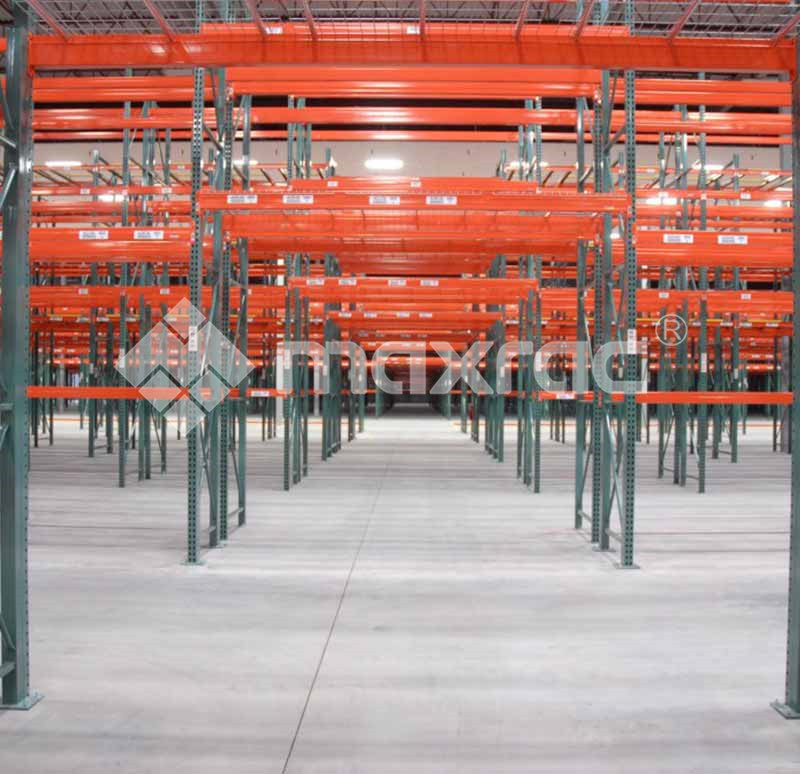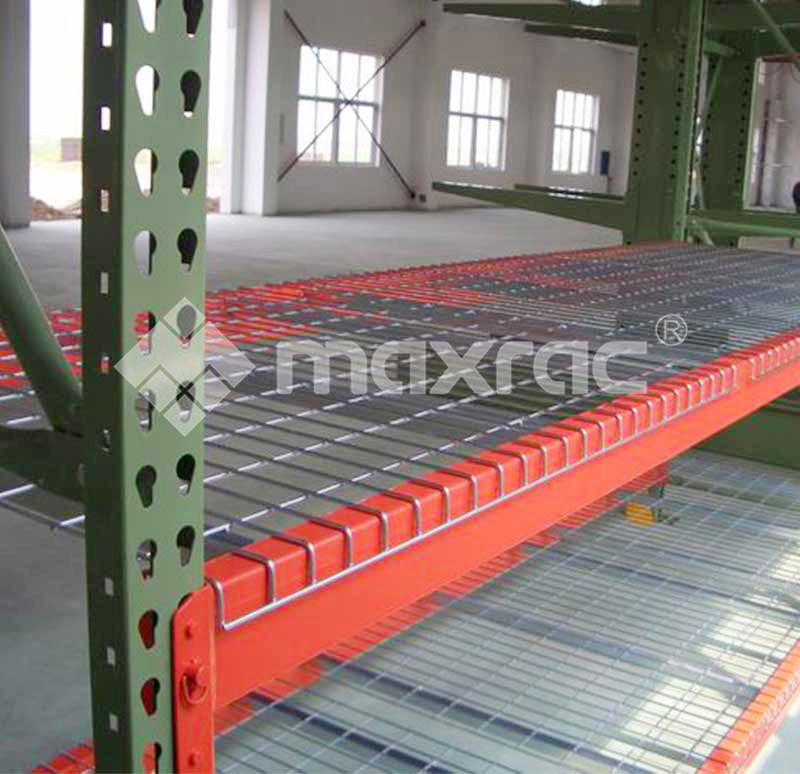One of the most important things to consider when choosing the right equipment for your selective pallet racking system is the way the beams and columns are stamped. These stamping styles may vary from manufacturer to manufacturer. Because the stamping style depends on your storage requirements, choosing the right type is critical when optimizing your warehouse and meeting OSHA safety requirements.
Teardrop racking is the current industry standard for stamping styles on selective pallet racking. The term "teardrop" comes from the shape of the connection slots built into the pallet racking columns.
Since the post-World War II manufacturing boom, iterations in material handling eventually led to the use of teardrop racking primarily in warehouses because of the simplicity and safety of the teardrop slot design. As your storage needs change or your warehouse needs to be reconfigured for more space, teardrop racking takes relatively little time to assemble and disassemble.
When a pallet load is placed on top of your racking, the vertically supported load is compressed into the bottom of the reduced diameter teardrop channel, which firmly anchors the horizontal beams in the pallet racking columns. Therefore, the only way for the load to slide out of its position is to apply an upward force to it. The underlying physics keeps everything in place.
High-quality teardrop rack beams also include pins that slide into teardrop slots that have tight tolerances to ensure no slack when a load is placed on the beam. When used in conjunction with safety pins, the entire teardrop rack system becomes stronger and safer, preventing common safety incidents caused by accidental loosening or even forklift mishandling.
An important thing to consider when using teardrop racks is your load requirements. Always make sure that the product load is appropriate for the load capacity of your teardrop pallet racking system.

The benefits of teardrop racking are summarized below.
Most teardrop shelving columns, beams and accessories can be used interchangeably with other suppliers, making it easier to purchase equipment. Note: If you use beams from a different manufacturer, be sure to double check the dimensions of the racking components. Even the smallest differences can reduce the structural integrity of the entire system.
Basic physics, along with the use of beam pins and safety clips, ensure that your racking system is strong and protected against accidental unloading
Teardrop racks are easy to install and require no specialized skills or tools
Standardization of Teardrop rack punching styles allows warehouse managers to mix and match different columns and beams to meet their storage needs

Ultimately, the choice of using teardrop shelving versus other types of selective pallet racking boils down to
If your increased load requirements exceed the requirements of Teardrop racking, using a different system such as structural racking will help you meet those additional weight handling capabilities.
Teardrop shelving is easiest to assemble or disassemble, making it ideal for warehouses that are frequently reconfigured. However, if you do not foresee the need to reconfigure your racking on a regular basis and you need to take advantage of upgraded load handling, then other styles of racking may be suitable for your needs.
In harsh warehouse environments such as cold storage or fast-paced distribution centers, a more robust racking system such as structural racking may be a better choice.
If you need assistance in determining your selective pallet racking requirements, contact MAXRAC today. We offer warehouse design services to help you plan your next warehouse project.